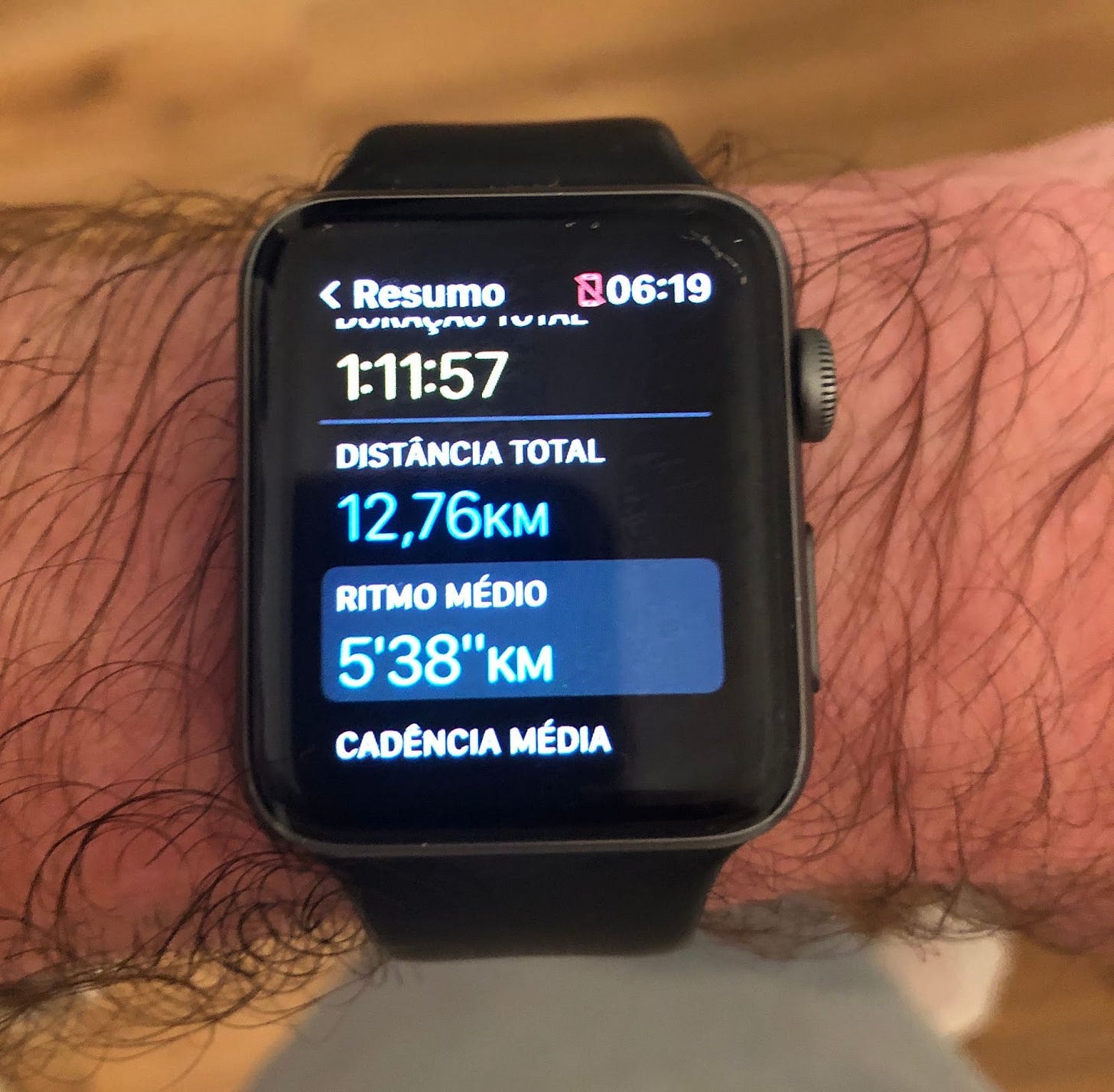Benefit From Nassim Taleb’s Antifragility to Stay Calm During Market Sh!tstorms
Challenge your body and mind

You need to experience pain to be a resilient investor.
I spent a month in Thailand earlier this year. I had a bunch of fun ideas about the food I’d taste and places I’d visit. Yet I was bored after a couple of weeks.
It felt cool in the beginning to be able to afford anything. But you get mentally tired of all the adventure. The only salvation is to get back to doing what makes you fulfilled.
So I stayed in my hotel room in the afternoon for the remaining two weeks to read and write and instantly felt better.
The experience made me realize that absolute freedom doesn’t exist. Choosing one item from twenty isn’t better than choosing one from two because it gives you more anxiety over whether you made the right choice.
Freedom comes from the constraints you choose to put on yourself.
Self-limitation is more than just focusing on “the work you love.” A big chunk of your life is spent doing stuff that makes you experience (reasonable) pain.
Pleasure doesn’t last while pain is universal. And pain leads to clarity.
I know this from my early-morning running sessions. I wake up at 4:40 am three times a week to run 12 km.
I’ve been doing this for seven years, and every time running feels like pain.
The stiff muscles in the morning scream that the five-minute warm-up was too short. The heavy breathing makes me slow down, but when I do slow down, I feel like a weakling and accelerate instead, breathing more heavily. And the cold gushing wind with rain isn’t welcoming.
So why do I keep running?
You get used to the pain. And this is why running turns into meditation.
Sitting on a soft yoga mat while listening to affirmations like “I’m at peace” is the first step toward meditation.
Real meditation begins when you confront your weird thoughts and traumatic experiences. And focusing on them only amplifies them.
It’s in these moments that you become aware of the flawed human nature and perhaps your traumatic childhood.
Focusing on your thoughts helps you get used to the pain. You accept yourself for what you are. It helps you come to terms with the stuff that hurts you.
It’s essentially expanding your comfort zone into the pain area. This is why running is so effective. It helps you push that fence for both your physical and mental pain.
This resilience mirrors Nassim Taleb’s concept of antifragility.
Because after five or so kilometers you’ve come so far it makes sense to stop thinking about the “painful part” of running and just observe your pain as an outsider.
Congratulations, now you’re comfortable with your pain.
And I’m not even talking about the stronger bones, improved heart health, or weight loss that running can offer. Its physical benefits are well-known.
But if you’re into investing like me, this antifragility from running translates into a powerful mindset for making money as an investor.
Here are the wonders running does for your investor’s mind.
Long-term view makes all the difference
Running reinforces your mind-body connection.
It’s a natural way of making yourself feel good. Every runner knows the emotional high from completing a race.
I always look forward to this moment. It feels like I’ve accomplished something big before going to the office.
Dopamine strengthens neural connections, which enhances attention and cognitive control. You’re literally smarter after running. You get new (or better) ideas due to the enhanced blood circulation through your body and brain.
Smarter means better focus.
Applied to capital markets, a sharp mind makes you a better investor. It keeps you locked on your long-term goals. You’re not distracted by sensational news headlines like “The economy could plunge into a recession by year end.”
Not giving a f*ck about the most popular opinion on the economy separates you from a multiple six-figure investment account.
Run to sharpen your focus on long-term financial goals.
Know the emotion and ignore it
Every good investor has lost money.
It’s the price to pay for learning how investing works. And it can be a traumatic experience.
As the saying goes, gurus have predicted ten recessions out of the last seven. Predictions don’t work because recessions come precisely when you least expect them.
So when your investment account sinks unexpectedly, at the very least you feel uncomfortable.
Most people panic and sell, so the market tanks. It’s safe to say everyone could use a bit of therapy.
My therapy during the 2022 bear market was running. The physical activity distracted me from the dismal performance of my stocks. The worst I could’ve done was to open my brokerage and stare at the red color smeared across my portfolio.
Warming up, running, stretching, taking a shower, and having breakfast kept me away from my computer for ninety minutes. Then I’d go to work and still not think about the financial bloodbath happening in real time.
And then I was less likely to give in to my fight or flight instinct and press the Sell button.
Now that I look back, those were just paper losses. The stocks came back and made a thousand new highs. But try to explain that to someone whose portfolio is minus 30% (and sinking).
A mind sharpened by running is self-aware.
You know the exact emotion that triggers your panic mode. Next time it happens, you acknowledge the emotion and… do nothing.
I validated this approach when the market fell during the tariff situation in March-April 2025. It worked.
Run to master your emotions.
How to become a bada$$ investor taking risks
Your assets exceed your risk threshold if you freak out at the news.
Investing should add zero stress because you’re building a better future for yourself and your family. It should make you feel good.
Which means embracing some risk because it’s a natural part of investing.
And running could help you with that.
Dopamine is a natural stress killer. The days when I run in the morning seem easy. No matter how many Excel spreadsheets I have to fill out later at work, I simply do that. No self-pity, no procrastination, no excuses.
For you as an investor, less stress means not reacting to the news or short-term market corrections. Running helps you expand your comfort zone with regard to investing risk.
A direct consequence is you can hold riskier assets longer and make more money.
Because let’s face it, the higher the risk, the larger the potential returns (but do your due diligence and avoid going all in on a single Biotechnology stock that could sink by 60% tomorrow).
Run to elevate your risk threshold.
The takeaway
Investing is more psychology than three-page formulas of matrix calculations projecting companies’ future cash flows.
But simply saying “From now on, I’ll dominate my emotions” won’t help you.
You need to boost your antifragility. Running is the best tool to enhance your emotional resilience.
Most people tell me they hate running. It’s precisely for this reason that they should run.
They’ll experience pain. But the reward will be generous when they overcome it.
So run.
This article is for informational purposes only. It should not be considered Financial or Legal Advice. Not all information will be accurate. Consult a financial professional before making any major financial decisions.
P. S. I’ll drop a big announcement tomorrow, one that every long-term investor can benefit from.
Keep an eye on your inbox :)





My only concern is the valuations and the average return over the next 10 years. But I counter this by finding quality companies in industries aligned with the trends at good valuations. I love the idea of the barbell portfolio, which benefits from all markets.
A nice connection between running and the temperament for investing. I like it, Denis!